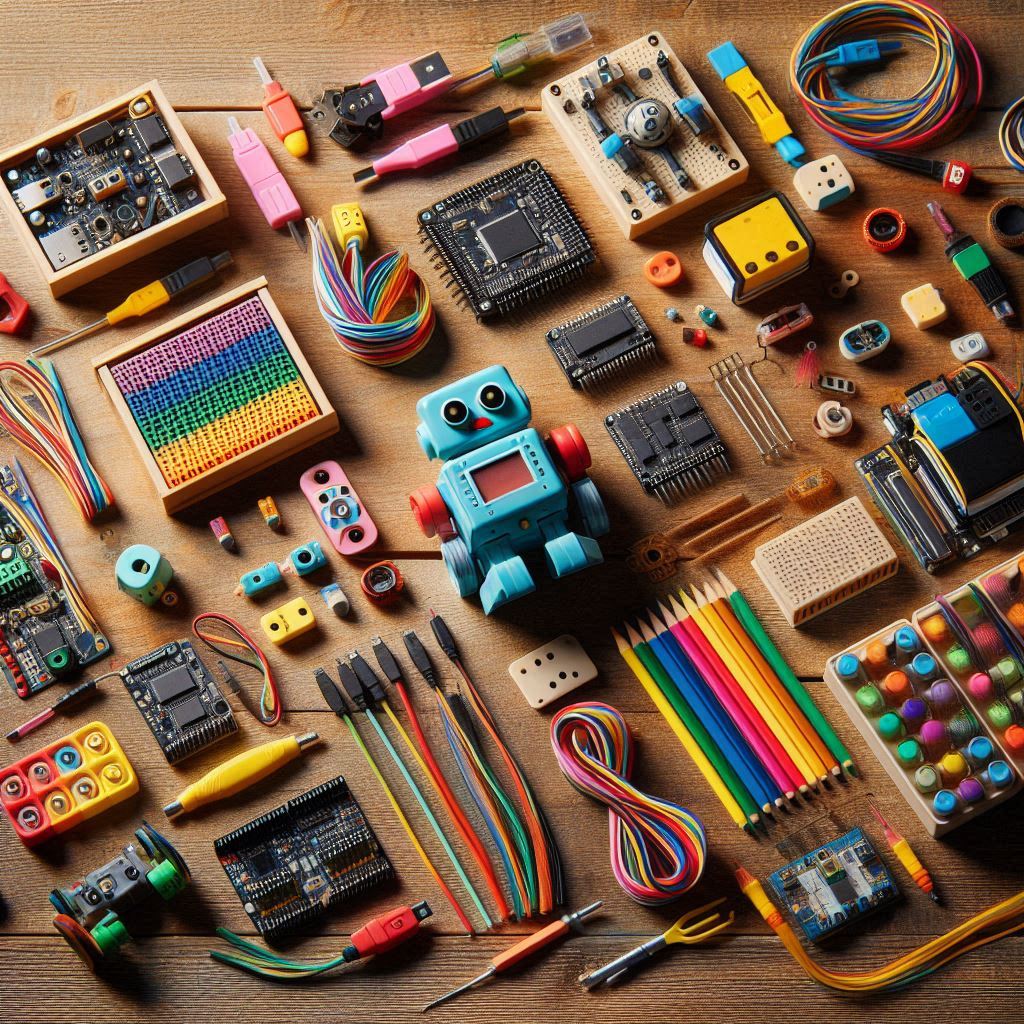Understanding AI Development Kits: NVIDIA Jetson and Intel Neural Compute Stick
Artificial Intelligence (AI) development kits are essential tools for developers and enthusiasts looking to create innovative AI applications. Two popular kits are the NVIDIA Jetson and the Intel Neural Compute Stick. In this section, we’ll dive into the core components and their importance, helping you understand why these kits are must-haves for AI development.
Make and Material Used
NVIDIA Jetson:
- Material: The Jetson kits are typically built with high quality components like aluminum and reinforced plastic, ensuring durability and efficient heat dissipation. These materials are crucial for maintaining optimal performance under heavy computational loads.
- Importance: Using durable materials helps in maintaining the integrity of the device, providing longevity and consistent performance, which is essential for continuous AI model training and deployment.
Intel Neural Compute Stick:
- Material: This compact stick is crafted from robust plastic and lightweight aluminum. The choice of these materials allows for portability and efficient thermal management.
- Importance: The lightweight design makes it easy to carry and deploy in various environments, perfect for developers on the go.
2. Power and Efficiency: Fueling AI Innovations
Power is a critical aspect of AI development kits, as it directly impacts performance and capabilities. Let’s explore the power specifications of the NVIDIA Jetson and Intel Neural Compute Stick.
Power Specifications and Their Importance
NVIDIA Jetson:
- Power Consumption: The Jetson kits typically have a power consumption range of 10-30 watts, depending on the model.
- Importance: Efficient power usage ensures that the kit can run intensive AI applications without overheating, making it suitable for edge computing and IoT applications where power efficiency is paramount.
Intel Neural Compute Stick:
- Power Consumption: This device draws minimal power, typically under 5 watts.
- Importance: Low power consumption is vital for portable AI solutions and embedded applications, allowing for energy-efficient processing without compromising performance.
3. Speed and Performance: Accelerating AI Workflows
Speed and performance are crucial for AI development, as they determine how quickly and efficiently models can be trained and deployed. Here’s a breakdown of the speed and performance aspects of these kits.
Speed and Computational Power
NVIDIA Jetson:
- CPU Model: Equipped with powerful CPUs, often based on ARM architecture, providing high-speed processing.
- Importance: The fast processing speeds enable quick execution of complex AI algorithms, essential for real-time applications like autonomous vehicles and robotics.
Intel Neural Compute Stick:
- Processing Speed: Utilizes Intel’s Movidius Myriad 2 VPU (Vision Processing Unit) for high-speed AI inference.
- Importance: The dedicated VPU accelerates AI workloads, allowing for rapid prototyping and deployment of AI models on edge devices.
4. Memory and Storage: Enhancing Data Handling Capabilities
Memory and storage capacity play a significant role in determining how much data can be processed and stored. Let’s look at the RAM and storage specifications of these kits.
Memory and Storage Specifications
NVIDIA Jetson:
- RAM Installed Size: Typically features 8 GB of RAM, with some models offering up to 16 GB.
- Importance: Ample RAM ensures smooth handling of large datasets and complex AI models, minimizing latency and improving performance.
- Storage: Supports various storage options, including eMMC, SD cards, and external drives.
- Importance: Flexible storage options allow developers to choose the best solution for their needs, ensuring that large datasets and models can be stored and accessed efficiently.
Intel Neural Compute Stick:
- RAM Installed Size: Limited on-board memory but relies on the host device’s memory.
- Importance: The reliance on the host device’s memory means that the stick can remain compact and lightweight while still delivering powerful AI processing capabilities.
- Storage: Utilizes the storage of the host device, making it versatile and easy to integrate.
- Importance: This approach ensures that the Neural Compute Stick can be used with various devices without the need for additional storage.
5. Connectivity and Integration: Facilitating Seamless AI Development
Connectivity options are vital for integrating AI development kits into various systems and workflows. Here’s an overview of the connectivity features of the NVIDIA Jetson and Intel Neural Compute Stick.
Connectivity Options and Their Importance
NVIDIA Jetson:
- Connectivity Technology: Offers multiple connectivity options, including USB, DisplayPort, Ethernet, and GPIO.
- Importance: These versatile connectivity options make it easy to integrate the Jetson kit with a wide range of peripherals and devices, facilitating seamless AI development and deployment.
Intel Neural Compute Stick:
- Connectivity Technology: Primarily connects via USB, making it easy to use with laptops, desktops, and other compatible devices.
- Importance: The USB connectivity ensures that the Neural Compute Stick can be quickly and easily deployed across various platforms, enabling rapid development and testing of AI models.

